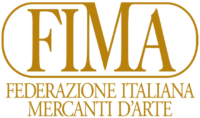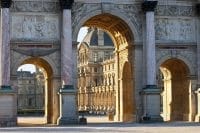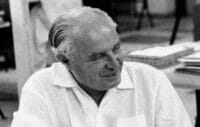 Description
Description
 1702th century, circle of Francesco Zuccarelli (Pitigliano, 1788 – Florence, XNUMX)
1702th century, circle of Francesco Zuccarelli (Pitigliano, 1788 – Florence, XNUMX)
 The banquet of Jupiter and Juno
The banquet of Jupiter and Juno
 Oil on canvas, 70 x 110 cm
Oil on canvas, 70 x 110 cm
 With frame, 90 x 128 cm
With frame, 90 x 128 cm
 In the brilliant eighteenth century, a century of Rococo grace and the rediscovery of nature, the figure of Francesco Zuccarelli (1702-1788) emerged as one of the most appreciated and influential landscape painters, capable of enchanting the courts and the European aristocracy with his idyllic and harmonious visions. His career, rich in travel and success, led him to move between the nerve centres of art of his time, leaving an indelible mark especially in Venice and London. Born in Pitigliano, in the province of Grosseto, on August 15, 1702, Zuccarelli began his artistic training in Tuscany, first in Florence in the workshop of Paolo Anesi. Later, he moved to Rome, where he furthered his studies with Giovanni Maria Morandi and Pietro Nelli. It was in the Eternal City that Zuccarelli decisively approached the landscape genre, assimilating the lessons of the great masters of the seventeenth century, in particular Claude Lorrain. From them he learned to construct scenes immersed in a golden and timeless light, with a compositional balance that would become one of his stylistic hallmarks. It is here that his “Arcadian world” begins to take shape, made up of idealized natures and figures that populate a lost golden age. His career took a decisive turn when he moved to Venice. Here, Zuccarelli quickly became part of the dynamic artistic scene of the lagoon, which saw the flourishing of veduta painting and a taste for idyllic landscapes. In this context, he entered into competition and dialogue with other important landscape artists, such as Giuseppe Zais, helping to define the visual language of the eighteenth-century Venetian landscape. His painting, characterized by a serene atmosphere and meticulous attention to detail, began to achieve great success. But it was England that consecrated him at international level. In 1752, Francesco Zuccarelli settled in London, where he found a particularly receptive environment for his art. The wealthy English clients, eager to bring the charm of Italy and the beauty of its landscapes into their homes, welcomed him with enthusiasm. Zuccarelli quickly became one of the most sought-after artists, and his works, which often immortalized Italian landscapes populated by bucolic figures and classical ruins, became a symbol of the Grand Tour and the Rococo style. His influence was such that he inspired numerous local artists, including the famous Joshua Reynolds. During his nearly two decades in England, Zuccarelli was not only a successful painter: he was also a founding member of the prestigious Royal Academy in 1768, a testament to his prestige and influence on the British art scene. He also carried out important commissions, such as a series of tapestries for Charles Wyndham, 2nd Earl of Egremont. After an initial return to Venice, Zuccarelli returned to London in 1765 and remained there until 1773, when he finally returned to Italy, now rich and admired. He settled in Florence, the city of his education, where he continued to work tirelessly until his death on 30 December 1788. Zuccarelli's works are scattered throughout numerous collections and museums around the world, with a significant presence in England, a testament to the vast production he created for British clients. Among his best-known paintings are landscapes with mythological or biblical figures, pastoral scenes with shepherds and animals, and views of the Roman or Venetian countryside, all permeated by a clear light and a sense of harmony and serenity. Zuccarelli was an artist who knew how to interpret and shape the taste of his time, creating a kind of landscape that evoked an ideal world, where nature and man lived in perfect harmony.
In the brilliant eighteenth century, a century of Rococo grace and the rediscovery of nature, the figure of Francesco Zuccarelli (1702-1788) emerged as one of the most appreciated and influential landscape painters, capable of enchanting the courts and the European aristocracy with his idyllic and harmonious visions. His career, rich in travel and success, led him to move between the nerve centres of art of his time, leaving an indelible mark especially in Venice and London. Born in Pitigliano, in the province of Grosseto, on August 15, 1702, Zuccarelli began his artistic training in Tuscany, first in Florence in the workshop of Paolo Anesi. Later, he moved to Rome, where he furthered his studies with Giovanni Maria Morandi and Pietro Nelli. It was in the Eternal City that Zuccarelli decisively approached the landscape genre, assimilating the lessons of the great masters of the seventeenth century, in particular Claude Lorrain. From them he learned to construct scenes immersed in a golden and timeless light, with a compositional balance that would become one of his stylistic hallmarks. It is here that his “Arcadian world” begins to take shape, made up of idealized natures and figures that populate a lost golden age. His career took a decisive turn when he moved to Venice. Here, Zuccarelli quickly became part of the dynamic artistic scene of the lagoon, which saw the flourishing of veduta painting and a taste for idyllic landscapes. In this context, he entered into competition and dialogue with other important landscape artists, such as Giuseppe Zais, helping to define the visual language of the eighteenth-century Venetian landscape. His painting, characterized by a serene atmosphere and meticulous attention to detail, began to achieve great success. But it was England that consecrated him at international level. In 1752, Francesco Zuccarelli settled in London, where he found a particularly receptive environment for his art. The wealthy English clients, eager to bring the charm of Italy and the beauty of its landscapes into their homes, welcomed him with enthusiasm. Zuccarelli quickly became one of the most sought-after artists, and his works, which often immortalized Italian landscapes populated by bucolic figures and classical ruins, became a symbol of the Grand Tour and the Rococo style. His influence was such that he inspired numerous local artists, including the famous Joshua Reynolds. During his nearly two decades in England, Zuccarelli was not only a successful painter: he was also a founding member of the prestigious Royal Academy in 1768, a testament to his prestige and influence on the British art scene. He also carried out important commissions, such as a series of tapestries for Charles Wyndham, 2nd Earl of Egremont. After an initial return to Venice, Zuccarelli returned to London in 1765 and remained there until 1773, when he finally returned to Italy, now rich and admired. He settled in Florence, the city of his education, where he continued to work tirelessly until his death on 30 December 1788. Zuccarelli's works are scattered throughout numerous collections and museums around the world, with a significant presence in England, a testament to the vast production he created for British clients. Among his best-known paintings are landscapes with mythological or biblical figures, pastoral scenes with shepherds and animals, and views of the Roman or Venetian countryside, all permeated by a clear light and a sense of harmony and serenity. Zuccarelli was an artist who knew how to interpret and shape the taste of his time, creating a kind of landscape that evoked an ideal world, where nature and man lived in perfect harmony.
 This interesting Banquet of Jupiter and Juno reveals a striking resemblance to Zuccarelli's painting: from the Tuscan-born painter, it borrows the pastel tones and Arcadian atmospheres, drawing not only on the Italian Rococo tradition but also on the transalpine influences of Poussin and Lorrain. The fluid brushstrokes and rapid, defined touch also recall Zuccarelli's most representative works.
This interesting Banquet of Jupiter and Juno reveals a striking resemblance to Zuccarelli's painting: from the Tuscan-born painter, it borrows the pastel tones and Arcadian atmospheres, drawing not only on the Italian Rococo tradition but also on the transalpine influences of Poussin and Lorrain. The fluid brushstrokes and rapid, defined touch also recall Zuccarelli's most representative works.
 The Banquet of Jupiter and Juno is a recurring and fascinating iconographic theme in art from various periods, depicting the Olympian gods gathered at a festive banquet, often accompanied by other deities, Muses, and nymphs, as well as music, dance, and an abundance of food and nectar. In the painting under consideration, Jupiter, distinguished by a thick white beard, and his consort Juno, wrapped in an elegant red cloak, are visible at either end of the table. They are followed by Ganymede, visible in the foreground wearing a green tunic, and Hebe, positioned on the right, offering a dish to the diners. The scene is enriched by the presence of nine Muses, some of whom carry musical instruments such as the harp and lyre, as well as garlands of flowers. The composition is completed by the three nymphs placed on the left side of the canvas, one of whom holds a plate full of fruit, one is kneeling and the other is depicted in a position above.
The Banquet of Jupiter and Juno is a recurring and fascinating iconographic theme in art from various periods, depicting the Olympian gods gathered at a festive banquet, often accompanied by other deities, Muses, and nymphs, as well as music, dance, and an abundance of food and nectar. In the painting under consideration, Jupiter, distinguished by a thick white beard, and his consort Juno, wrapped in an elegant red cloak, are visible at either end of the table. They are followed by Ganymede, visible in the foreground wearing a green tunic, and Hebe, positioned on the right, offering a dish to the diners. The scene is enriched by the presence of nine Muses, some of whom carry musical instruments such as the harp and lyre, as well as garlands of flowers. The composition is completed by the three nymphs placed on the left side of the canvas, one of whom holds a plate full of fruit, one is kneeling and the other is depicted in a position above.


 Rococo Style: How it Distincts in Architecture, Furnishings and Painting
Rococo Style: How it Distincts in Architecture, Furnishings and Painting
![]() Rococo Style: Birth and Development The Rococo, as a reflection of the trends, tastes and way of life of France…
Rococo Style: Birth and Development The Rococo, as a reflection of the trends, tastes and way of life of France…

































